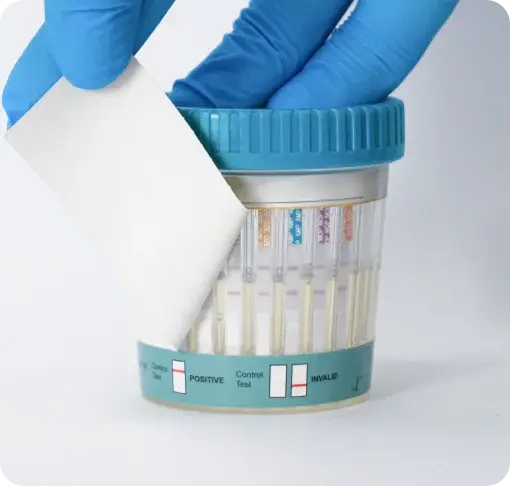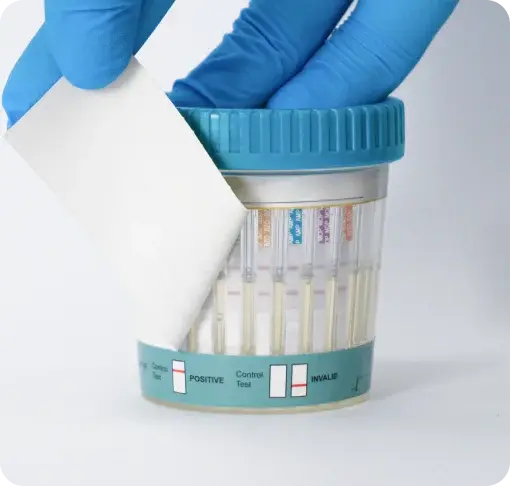A Complete Guide for Employers and Healthcare Providers
Tramadol is a prescription opioid often used to treat moderate to severe pain. While it’s legal for medical use, its misuse has grown—raising concerns for employers, occupational health teams, and clinical professionals. Whether you're overseeing patient care or managing a safety-critical workforce, understanding how Tramadol is detected in drug tests is essential for maintaining a safe, compliant environment.
In this article, we’ll explore how Tramadol appears on drug tests, the types of testing available, how long it stays in the body, and key considerations for interpreting results in workplace and healthcare settings.
What Is Tramadol?
Tramadol is a synthetic opioid analgesic that acts on the central nervous system to relieve pain. It has a dual mechanism of action—binding to opioid receptors and inhibiting the reuptake of norepinephrine and serotonin. Though it's considered less potent than drugs like morphine, Tramadol still carries a risk of dependence and abuse.
Street names for Tramadol include:
- Trammies
- Chill Pills
- Ultras
- D
Will Tramadol Show Up on a Drug Test?
Yes—but with a caveat. Tramadol will not typically appear on standard 5-panel or 10-panel drug tests. It requires inclusion in extended panels such as 12-, 14-, or 16-panel tests, or a specific opioid prescription screen.
Depending on the testing lab, Tramadol may show up on results as "TRA," "Tramadol," or under its metabolite name O-desmethyltramadol.
Which Drug Tests Detect Tramadol?
For healthcare and workplace settings, Tramadol can be identified using the following methods:
Urine Drug Test
- Detection Window: 1 to 4 days
- Use Case: Pre-employment, random screening, clinical rehab settings
- Advantages: Cost-effective, widely used, detects recent use
- Limitations: Won’t catch very recent (within a few hours) use
Saliva Drug Test
- Detection Window: Up to 48 hours
- Use Case: Post-incident testing, reasonable suspicion, on-site clinical screening
- Advantages: Non-invasive, quick turnaround
- Limitations: Shorter detection window than urine
How Long Does Tramadol Stay in the System?
| Test Type | Detection Window |
| Urine | 1-4 Days |
| Saliva | 1-3 Days |
Factors affecting detection include:
- Frequency of use
- Dosage
- Metabolic rate
- Age and liver/kidney function
Can a False Positive Happen?
False positives for Tramadol are rare, but they’re possible—particularly in rapid point-of-care tests (POCT). To reduce misinterpretation, all presumptive positive results should be followed by confirmation testing such as GC-MS or LC-MS/MS, which offers high specificity and reliability.
What Does Tramadol Look Like on a Drug Test Result?
On AttoSure's panel tests, Tramadol may appear as TRA or under its metabolite name. If a test line fails to appear next to the TRA strip, the result is considered non-negative, indicating possible recent use. In clinical or workplace environments, this should trigger a confirmation test before any decisions are made.
Why Employers and Healthcare Providers Test for Tramadol
Tramadol can impair cognitive and motor functions, making it a concern in safety-critical roles or healthcare scenarios. Routine testing is used to:
- Maintain workplace safety
- Ensure medication compliance
- Support clinical treatment plans
- Monitor for prescription misuse or diversion
Industries like transport, manufacturing, healthcare, and construction increasingly include Tramadol in extended panel screenings.
You can also test your knowledge with our expert-designed quizzes tailored for workplace and healthcare settings. We pride ourselves on delivering first-class educational content, created by our team of scientific experts. Browse our selection of quizzes below.
Final Thoughts
While Tramadol has legitimate medical uses, it poses potential risks in both clinical and occupational environments. Understanding how and when it can be detected helps employers and healthcare providers make informed, fair, and safe decisions.
At AttoSure, we offer comprehensive Tramadol testing services, from rapid point-of-care tests to certified laboratory confirmation. Whether you're supporting a patient or ensuring a drug-free workplace, our expert team is here to help.
You can also test your knowledge with our expert-designed quizzes tailored for workplace and healthcare settings. We pride ourselves on delivering first-class educational content, created by our team of scientific experts. Browse our selection of quizzes below.
Contact Us


